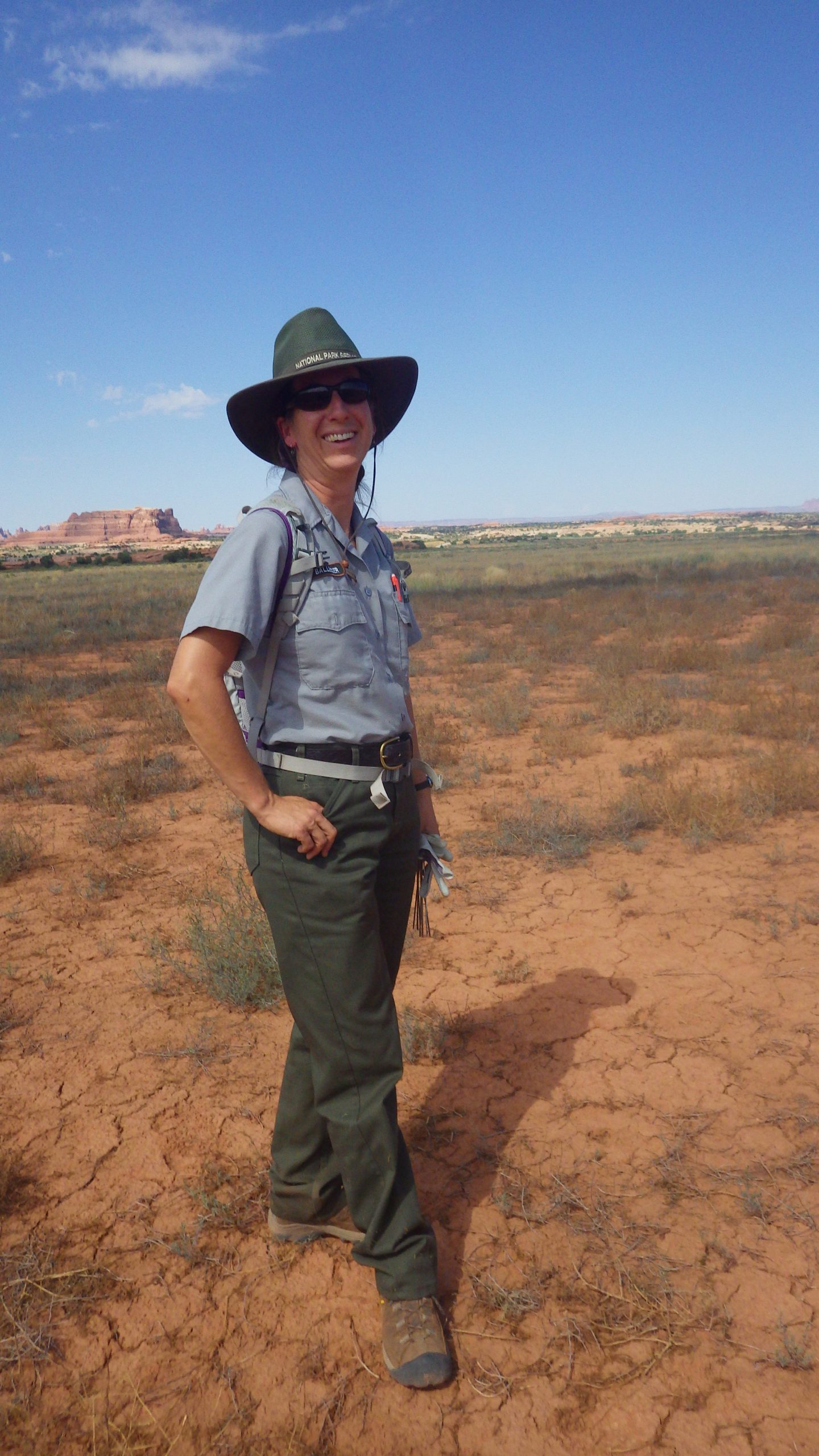Some information may be outdated.
There are many efforts going on with the national parks of the Southwest to restore degraded ecosystems. From monitoring non-native species to anticipating the effects of climate change, the national parks of southeastern Utah are actively being managed to maintain or restore their ecological function. Here, Science Moab speaks with NPS ecologist Liz Ballenger about what ecological restoration means for national parks within Utah and across the Colorado Plateau.
Science Moab: What does ecological restoration mean, and what is its main goal?
Ballenger: The overall goal of ecological restoration is setting the ecosystem on the right trajectory to recover on its own. At the National Park Service, our mission statement says that we need to preserve and protect, unimpaired, the natural and cultural resources for future generations to enjoy, so it’s our job to make sure that resources are unimpaired. That’s especially crucial as we’re facing climate change, and thinking about where our ecosystems are probably headed, in terms of drought, warming temperatures, and all of that. What we’re after is the best functioning ecosystems that we can possibly have, and we think about it holistically from the physical forces and the climate to the vegetation that’s then supporting the wildlife. You have to think big-picture when thinking about ecosystem function.
Science Moab: Why do you think those areas aren’t recovering?
Ballenger: It really is the physical forces at work. Our grassland areas in need of restoration are these big, open, barren areas. They’re basically scoured out because high winds don’t allow soils to deposit there anymore. When it was grazed long ago, the cattle and sheep basically broke up the plants and bio-crust that was kind of protecting the surface, causing the soil to erode over time, so they’re not able to support the perennial grasses that were trying to grow there.
Science Moab: What are some strategies you use in restoration projects?
Ballenger: We have several things that we do for invasive species. We do the good old hand-pulling method, and we have a lot of help with that from staff, volunteers and Conservation Corps members. We also do herbicide applications, which we try to use minimally but is definitely necessary for controlling some species. We have been introducing some biological control agents, such as the tamarisk beetle. Seeding is a big component of what we do, so we have a very active seed collection program within the Park Service, and we use our seed stores in our various restoration projects. We’ve been quite strict about collecting all seeds within the parks, but with climate change in mind, we are starting to collect seed populations that might be more adapted to hotter temperatures and less water. The grasslands project is very focused on the soils too, because we’re capturing soil and sediment in those areas to provide a place for plants to be able to grow.
We also are hoping to get into more biological soil crust salvage and replanting, because soil stability is a big part of restoration as well in our dryland ecosystems. In riparian zones, we’re usually focused on exotic plant control, because most of our weeds like to take advantage of those moist environments and can grow really aggressively in those areas. Generally, when we do exotic plant control and there’s enough native species intermixed in that area, we can do passive restoration and allow our native species to reseed themselves and they can then outcompete everything else in there.
Science Moab: What are some of the unique challenges of doing restoration within national parks? What do you foresee being a challenge in the future?
Ballenger: Because of our dual mission, serving visitors is a big part of why we’re here. That can also present challenges because areas that you’re trying to restore often are receiving continuous impacts from visitors or infrastructure. There’s a lot of infrastructure that’s needed to support visitors. The biggest future challenge is climate change. I’m really hoping that we’re going to get the right conditions for grasses to start establishing out there. There are just a lot of unknowns about climate change.
Science Moab: How often are these restoration efforts monitored? Are you doing any kind of experiments within them to determine the right way to restore these areas?
Ballenger: Yeah, we always keep track of what we have seeded in an area, and then we go back and see what actually grew. We don’t, unfortunately, have time to do a lot of quantitative scientific monitoring of our restoration, but quick looks at what grows back when we’ve put in a certain effort help inform our future efforts. That’s what adaptive management is basically
Science Moab is a nonprofit dedicated to engaging community members and visitors with the science happening in Southeast Utah and the Colorado Plateau. To learn more and listen to the rest of this interview, visit www.sciencemoab.org/radio. This interview has been edited for clarity.
Appreciate the coverage? Help keep local news alive.
Chip in to support the Moab Sun News.





